
Exposé Online
What's old
Exposé print issues (1993-2011)
- 1 (October 1993)
- 2 (February 1994)
- 3 (May 1994)
- 4 (August 1994)
- 5 (October 1994)
- 6 (March 1995)
- 7 (July 1995)
- 8 (November 1995)
- 9 (March 1996)
- 10 (August 1996)
- 11 (February 1997)
- 12 (May 1997)
- 13 (October 1997)
- 14 (February 1998)
- 15 (July 1998)
- 16 (January 1999)
- 17 (April 1999)
- 18 (November 1999)
- 19 (May 2000)
- 20 (October 2000)
- 21 (March 2001)
- 22 (July 2001)
- 23 (December 2001)
- 24 (April 2002)
- 25 (September 2002)
- 26 (February 2003)
- 27 (August 2003)
- 28 (December 2003)
- 29 (April 2004)
- 30 (September 2004)
- 31 (March 2005)
- 32 (September 2005)
- 33 (May 2006)
- 34 (March 2007)
- 35 (January 2008)
- 36 (October 2008)
- 37 (July 2009)
- 38 (July 2010)
- 39 (Summer 2011)
Features
Kenso - Overview of Pre-1996 Releases
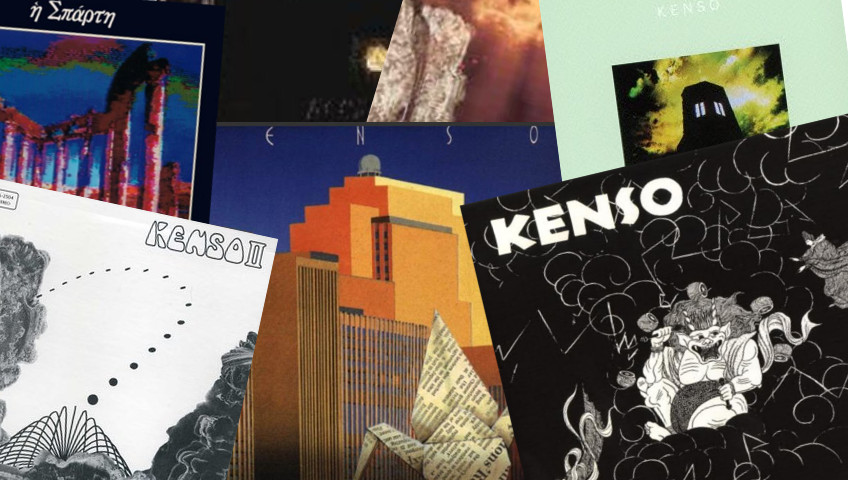
If Japan has the equivalent of a Happy the Man, Kenso is it. Their sound encompasses everything, from polished symphonic prog, to fusion, Canterbury, even touches of Japanese traditional music. The music is (with a couple of exceptions) entirely instrumental, melodically rich, highly spirited, and completely energized. They've been together since the late 70s, off and on, and the lineup has changed over time, but has always centered around guitarist Yoshihisa Shimizu. In addition to guitar, the lineup typically features dual keyboards, bass, and drums — and early on included a flautist as well.
by Peter Thelen, Published 1996-03-01
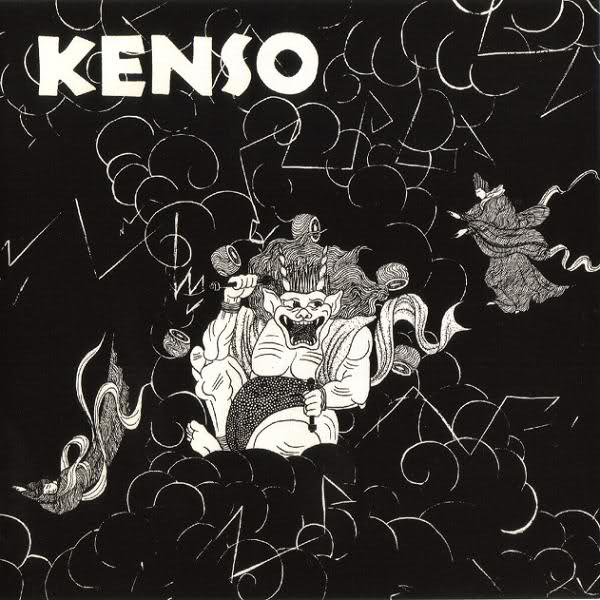 Their first album from '81, simply titled Kenso, featured six tracks of varying length, ranging from the pure symphonic prog of tracks like "Umi" to the more delicate "Inei No Fue" ("The Flute in the Shadows") to an all-out avant-garde piece that takes up most of side two. It is also the only Kenso album that features vocals, albeit sparingly. The LP was originally pressed in a limited edition of a few hundred and has never been reissued, so chances of finding a copy are next to nil. Fortunately, the three best instrumental cuts from it were included as bonus tracks on the reissue of Kenso II.
Their first album from '81, simply titled Kenso, featured six tracks of varying length, ranging from the pure symphonic prog of tracks like "Umi" to the more delicate "Inei No Fue" ("The Flute in the Shadows") to an all-out avant-garde piece that takes up most of side two. It is also the only Kenso album that features vocals, albeit sparingly. The LP was originally pressed in a limited edition of a few hundred and has never been reissued, so chances of finding a copy are next to nil. Fortunately, the three best instrumental cuts from it were included as bonus tracks on the reissue of Kenso II.
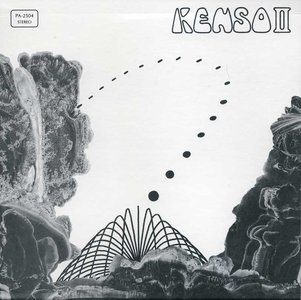 The second album showed more movement toward a symphonic fusion style, blending the energy of jazz-rock with the melodic intensity of progressive, not unlike bands like Hatfield or National Health, but Kenso clearly has their own formula for getting there. The third album, Kenso (AKA Kenso III), from 1985 (with an origami bird on the cover, not to be confused with the first album) moves even further in the same direction, more polished and perfected.
The second album showed more movement toward a symphonic fusion style, blending the energy of jazz-rock with the melodic intensity of progressive, not unlike bands like Hatfield or National Health, but Kenso clearly has their own formula for getting there. The third album, Kenso (AKA Kenso III), from 1985 (with an origami bird on the cover, not to be confused with the first album) moves even further in the same direction, more polished and perfected.
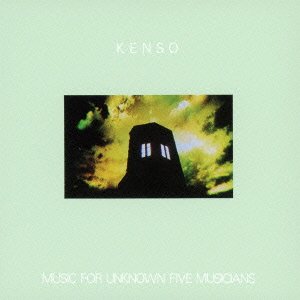 Kenso's finest moment, though, has to be their fourth album, a double-live titled Music for Unknown Five Musicians from 1986, which includes material from their first three albums and a couple (at that point) new tracks. This shows the band in their finest setting — live on stage. Kenso has released two more studio albums in the years since: Sparta in 1989 features recordings by two different lineups over a four year period, and is their most 'hard-fusion' album of all, while Yume No Oka from 1991 is a more cohesive effort that rivals the spirit of the early years.
Kenso's finest moment, though, has to be their fourth album, a double-live titled Music for Unknown Five Musicians from 1986, which includes material from their first three albums and a couple (at that point) new tracks. This shows the band in their finest setting — live on stage. Kenso has released two more studio albums in the years since: Sparta in 1989 features recordings by two different lineups over a four year period, and is their most 'hard-fusion' album of all, while Yume No Oka from 1991 is a more cohesive effort that rivals the spirit of the early years.
After a second live album release, Live 92, the band decided to hang it up for a while, and have only recently become active again.
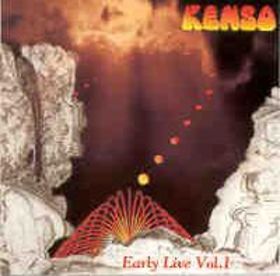 In the meantime, two discs of early live material have been released. The first is Sora Ni Hikaru - Early Live Vol. 1, and it contains live tracks taken from three shows between December '81 and July '83 — in other words around the time of the second album. Live tapes of this period had been floating around in collector circles for years, so it's good to see that finally the best material has been cleaned up and released on disc. The second disc is Inei No Fue - Live Vol.2, which contains material taken from three different shows in '81, '82, and '89. The bulk of the material is from the '82 show, which puts it squarely in the same timeframe as the first disc. There is also a studio track recorded in October '79 by an early four-piece version of the band, pre-dating their first album by two years!
In the meantime, two discs of early live material have been released. The first is Sora Ni Hikaru - Early Live Vol. 1, and it contains live tracks taken from three shows between December '81 and July '83 — in other words around the time of the second album. Live tapes of this period had been floating around in collector circles for years, so it's good to see that finally the best material has been cleaned up and released on disc. The second disc is Inei No Fue - Live Vol.2, which contains material taken from three different shows in '81, '82, and '89. The bulk of the material is from the '82 show, which puts it squarely in the same timeframe as the first disc. There is also a studio track recorded in October '79 by an early four-piece version of the band, pre-dating their first album by two years!
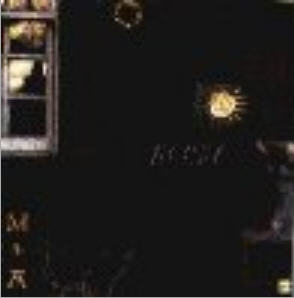 I would normally recommend the double-live album as the best place to start, but it's impossibly hard to find. Barring that, check out Kenso II for a studio release, or Early Live Vol. 1 for a live starter. All of their albums have my highest recommendation.
I would normally recommend the double-live album as the best place to start, but it's impossibly hard to find. Barring that, check out Kenso II for a studio release, or Early Live Vol. 1 for a live starter. All of their albums have my highest recommendation.
Filed under: Reissues, Profiles, Issue 9
Related artist(s): Kenso
What's new
These are the most recent changes made to artists, releases, and articles.
- Release: Family - Old Songs, New Songs
Updated 2025-12-29 00:03:41 - Review: The Kirkbys - It's a Crime: The Complete Recordings
Published 2025-12-29 - Release: Various Artists - Psychedelic Underground 20
Updated 2025-12-28 23:33:26 - Artist: Dhope
Updated 2025-12-28 23:27:49 - Artist: Tin Pan Alley
Updated 2025-12-28 23:21:39 - Release: Various Artists - Psychedelic Underground 19
Updated 2025-12-28 23:04:15 - Review: Earthbound - Earthbound
Published 2025-12-28 - Review: Olgoj - A Place to Rest
Published 2025-12-27 - Release: John Weider - John Weider
Updated 2025-12-26 19:13:54 - Artist: John Weider
Updated 2025-12-26 19:09:52 - Release: Moonrider - Moonrider
Updated 2025-12-26 18:51:45 - Artist: Moonrider
Updated 2025-12-26 18:49:51 - Release: Octopus Syng - Insanity Is the Song We Sing
Updated 2025-12-26 12:53:35 - Release: Tre Spiritus - Tre Spiritus
Updated 2025-12-26 12:49:13 - Artist: Tre Spiritus
Updated 2025-12-26 12:48:34 - Release: Arpia - Festa Grande
Updated 2025-12-26 12:42:27 - Release: Sigmund Freud - Risveglio
Updated 2025-12-26 12:37:54 - Artist: Sigmund Freud
Updated 2025-12-26 12:37:08 - Release: Davide Cedolin - Ligurian Pastoral, Vol II
Updated 2025-12-26 00:17:38 - Release: Davide Cedolin - Ligurian Pastoral
Updated 2025-12-26 00:15:05
